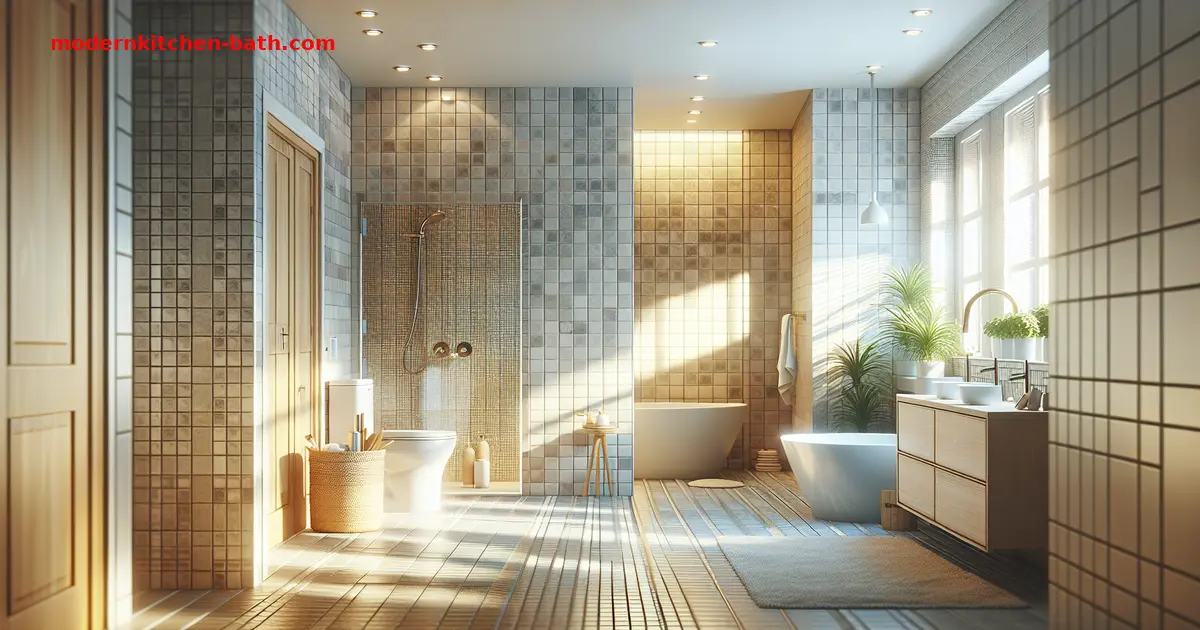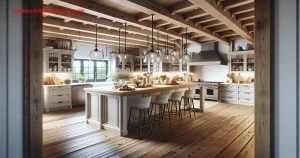Introduction to Bathroom Renovation
Bathroom renovation is a significant undertaking that can dramatically improve your home’s value and your daily comfort. A well-executed renovation enhances functionality, aesthetics, and overall appeal. In this comprehensive guide, we will walk you through each step of the bathroom renovation process, ensuring a smooth and successful project. From planning and budgeting to demolition and finishing touches, we’ll cover everything you need to know.
Planning and Preparation
The key to a successful bathroom renovation lies in meticulous planning. Before you even think about picking out tiles or fixtures, you need to establish a clear vision and budget for your project.
1. Define Your Goals and Needs
Start by asking yourself what you want to achieve with your renovation. Are you looking to update the aesthetics, improve functionality, or both? Consider your daily routines and identify any pain points in your current bathroom. Do you need more storage? A larger shower? Better lighting? Writing down your goals will help you stay focused and make informed decisions throughout the process.
2. Set a Realistic Budget
Bathroom renovations can range from minor cosmetic updates to complete overhauls. Determine how much you’re willing to spend and stick to it. Be sure to factor in not only the cost of materials and fixtures but also labor costs if you plan to hire professionals. It’s also wise to set aside a contingency fund (around 10-15% of your total budget) to cover unexpected expenses. You can explore resources on budgeting like those found on Wikipedia’s budgeting page.
3. Design Your New Bathroom
With your goals and budget in mind, start designing your new bathroom. Consider the layout, color scheme, materials, and fixtures. You can use online tools or work with a professional designer to create a detailed plan. Think about the placement of the toilet, sink, shower, and bathtub. Ensure that you have enough space to move around comfortably and that the layout is functional and efficient. Don’t forget to consider ventilation to avoid moisture build up.
4. Obtain Necessary Permits
Depending on the scope of your renovation, you may need to obtain permits from your local building department. Check with your municipality to determine what permits are required for your project. Failing to obtain the necessary permits can result in fines and delays, so it’s best to take care of this step early on.
Demolition and Removal
Once you have your plan in place and the necessary permits in hand, it’s time to start the demolition process. This can be a messy and labor-intensive task, so be prepared to protect yourself and your home.
1. Protect Your Home
Before you start tearing things apart, protect the areas of your home that you don’t want to be damaged. Cover floors and furniture with drop cloths or plastic sheeting. Seal off the bathroom from the rest of the house to prevent dust and debris from spreading. Use painter’s tape to protect trim and moldings.
2. Turn Off Utilities
Before you start any demolition work, turn off the water and electricity to the bathroom. This is crucial for your safety and will prevent any accidents. Locate the shut-off valves for the water supply and the circuit breaker for the bathroom. Test them to make sure they’re working properly.
3. Remove Fixtures and Finishes
Carefully remove the old fixtures, finishes, and accessories. Start with the toilet, sink, shower, and bathtub. Use the appropriate tools to disconnect the plumbing and electrical connections. Be careful not to damage any pipes or wires. Remove the flooring, tiles, and drywall. Dispose of the debris in a safe and responsible manner. You may want to consider renting a dumpster for large renovation projects.
Installation and Construction
With the demolition complete, it’s time to start installing the new features of your bathroom.
1. Plumbing and Electrical Work
Before you start installing new fixtures, ensure that the plumbing and electrical systems are in good condition. This is a good time to upgrade any outdated or damaged pipes or wires. Hire a licensed plumber and electrician to handle these tasks. They will ensure that everything is up to code and functioning properly. Lead pipe replacement is a common update that can be beneficial.
2. Framing and Drywall
If you’re changing the layout of your bathroom or adding new walls, you’ll need to do some framing. Build the new walls according to your design plan. Install new drywall and tape the seams. Apply a skim coat of joint compound to create a smooth surface. Sand the walls to remove any imperfections.
3. Waterproofing
Waterproofing is a crucial step in any bathroom renovation. Apply a waterproof membrane to the shower and tub areas. This will prevent water from seeping into the walls and floors, which can lead to mold and structural damage. Pay close attention to the corners and seams.
4. Flooring and Tiling
Install the new flooring according to the manufacturer’s instructions. If you’re using tile, apply a layer of thin-set mortar to the subfloor. Place the tiles carefully and evenly. Use spacers to maintain consistent grout lines. Once the mortar has dried, apply grout to fill the gaps between the tiles. Clean the tiles to remove any excess grout.
5. Fixture Installation
Install the new toilet, sink, shower, and bathtub. Connect the plumbing and electrical connections. Test the fixtures to make sure they’re working properly. Install the faucets, showerheads, and other accessories.
6. Painting and Finishing
Paint the walls and ceiling with a moisture-resistant paint. Install trim and moldings. Add the finishing touches, such as mirrors, towel racks, and lighting fixtures.
Final Touches and Cleanup
Once all the installations are complete, it’s time for the final touches and cleanup.
1. Inspect the Work
Carefully inspect the work to ensure that everything is up to your standards. Check for any leaks, cracks, or other imperfections. Make any necessary adjustments or repairs.
2. Clean the Bathroom
Thoroughly clean the bathroom to remove any dust, debris, and dirt. Wipe down all surfaces with a damp cloth. Clean the fixtures and accessories. Sweep and mop the floor.
3. Add Accessories
Add the final accessories, such as shower curtains, bath mats, and decorative items. These finishing touches will make your new bathroom feel complete and inviting.
Conclusion
Bathroom renovation is a complex project, but with careful planning and execution, you can transform your outdated bathroom into a beautiful and functional space. By following these step-by-step instructions, you can ensure a successful and stress-free renovation. Remember to set a realistic budget, obtain the necessary permits, and hire qualified professionals for any plumbing or electrical work. With a little patience and effort, you can create the bathroom of your dreams.
FAQ
1. How long does a bathroom renovation typically take?
The duration of a bathroom renovation can vary depending on the scope of the project. A minor cosmetic update may take a few days, while a complete overhaul can take several weeks. Factors such as the size of the bathroom, the complexity of the design, and the availability of materials can all impact the timeline.
2. How much does a bathroom renovation cost?
The cost of a bathroom renovation can range from a few thousand dollars to tens of thousands of dollars, depending on the size, materials, and complexity of the project. Setting a budget and sticking to it is important.
3. Do I need a permit for a bathroom renovation?
Depending on the scope of your renovation, you may need to obtain permits from your local building department. Check with your municipality to determine what permits are required for your project.
4. Can I do a bathroom renovation myself?
Some aspects of a bathroom renovation, such as painting and tiling, can be done by DIYers. However, it’s generally recommended to hire licensed professionals for plumbing and electrical work. These tasks require specialized knowledge and skills, and improper installation can lead to serious problems.
5. What are some popular bathroom renovation trends?
Popular bathroom renovation trends include incorporating natural materials, such as wood and stone; using energy-efficient fixtures and appliances; adding smart technology, such as voice-controlled lighting and temperature; and creating a spa-like atmosphere with features such as rainfall showerheads and soaking tubs.







Leave a Comment